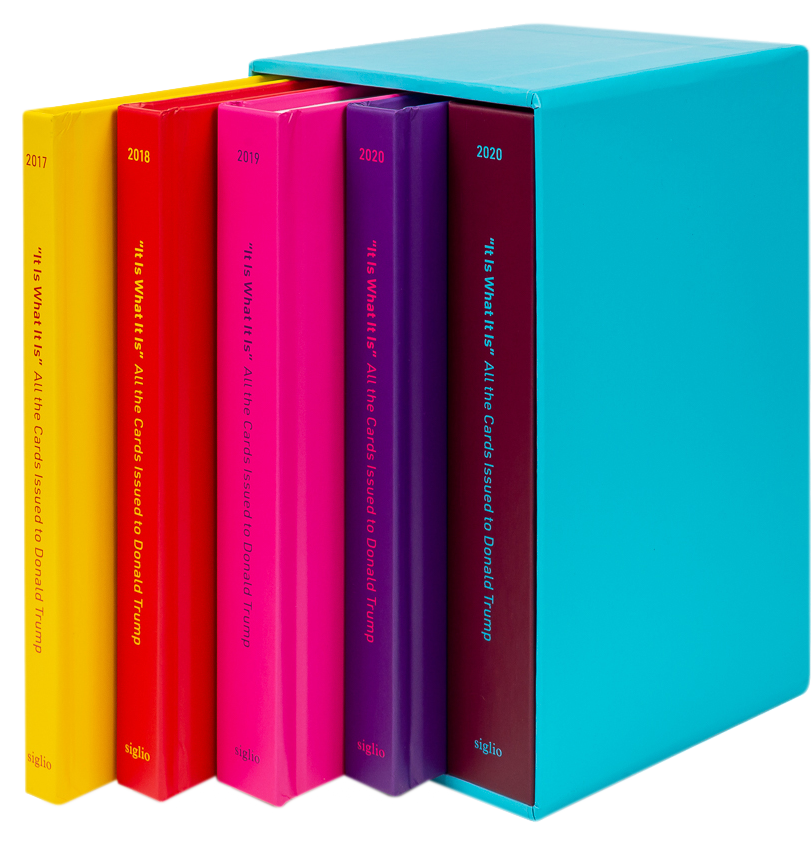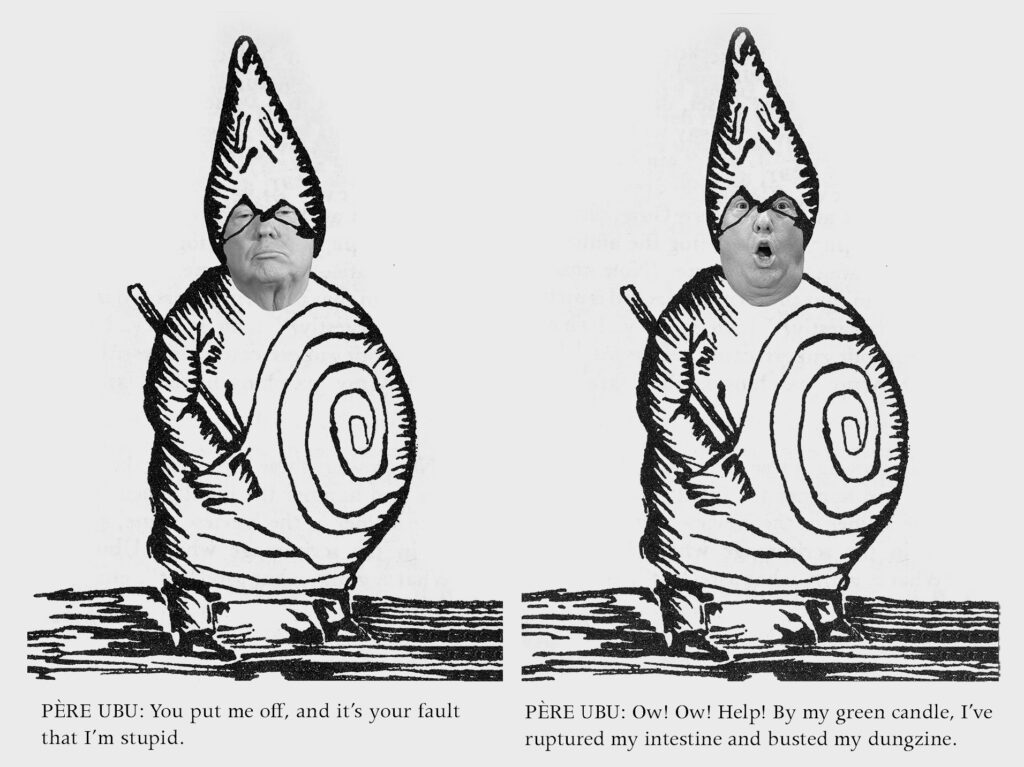Dazzling Testament to its Subject’s IncomprehensibilityLeah Ollman, Brooklyn Rail
reviews, 12/01/21
Originally published in the Dec21–Jan22 issue
In the introduction to his astonishing, 1,600-page, five-volume set fusing private protest and public record, Richard Kraft invokes photographer Robert Adams, who advises reckoning with terror head-on, through visual form: “Go to the landscape that frightens you the most and take pictures until you’re not scared anymore.” Kraft has used a camera for previous work, staged performative interventions of varying scale, and made collages on both paper and film. In fear and outrage on the morning of Donald Trump’s inauguration as the 45th U.S. president, he summoned different tools: the rectangular, colored penalty cards that soccer referees issue when a player has committed a foul—yellow for a warning and red for dismissal from the game.
On that day in 2017, Kraft, born in London and based in Los Angeles and the Hudson Valley, started assigning such cards for each of Trump’s lies and acts of improper conduct on the domestic and global fields. He made a daily practice of reckoning with the unfolding, unnatural disaster, answering the relentless chaos of the Trump years with a methodical, conceptual program. Diligently, soberly, he mapped the farce, until, 10,820 cards later, Trump was at last ejected from office. Books analyzing the Trump administration and tell-all memoirs by those who served within it continue to be released at a steady pace, each one promising a dose of clarity to aid in our collective recovery. Kraft’s set belongs among them, and yet apart, his real-time diary is a dazzling testament to its subject’s basic incomprehensibility.
Each volume of It Is What It Is: All the Cards Issued to Donald Trump, January 2017 – January 2021 encompasses one year of the former president’s tenure, except for his last year, so fat with egregious abuses that it required two separate volumes. By the end of Kraft’s four-year exercise in scrupulous attention—an excruciating durational performance—his palette had bloomed to ten colors. To accommodate the burgeoning range and increasing intensity of Trump’s transgressions, the spectrum denoting fouls surged past yellow (false verbal claims, empty threats, backpedaling and the like) and red (more hostile attacks, more blatant self-dealing and higher-stakes lies) to magenta, purple, and finally crimson, when Trump refused to guarantee a peaceful transfer of power. Orange cards were added to signify Trump’s golf days, and pink to stand for others who joined him on the course. Kraft assigned dark blue cards to represent those fired or resigned from the administration (“Fuck you as you go”), and lime green for those in Trump’s orbit who contracted COVID-19. He issued cards in a quenching teal to mark acts of resistance, such as editorials, public statements and court testimony speaking truth to power.
Every book in the set contains its own color key, followed by double-page spreads of 80 colored blocks in a calendrical grid. A spread might represent one day, four, seven, eleven or more. The sequencing of the cards was determined not by aesthetic intent, but by the order in which Kraft became aware of each breach. Spreads read at once as luminous mosaics and percussive, portentous alerts. Color alone tells the story, a narrative of escalating tension and danger (less yellow per page, more and more crimson), but Kraft also provides detailed annotations of each card’s referent incident and an index that organizes the individual offenses into categories such as Conspiracy Theories, Media, Race, Religion, and Women.
In published form, It Is What It Is has startling, assertive mass. Each volume measures a modest 5 by 8 inches, but when stacked or slipcased together, their combined heft registers dauntingly in the body the way the accreted, archived injustices and injuries to the democratic system weigh on the mind. Yet, the books are beautiful—vibrantly so, insistently so—and this visual splendor exerts an elevating counterforce to the despair elicited by the very same information delivered verbally. Moral depravity is made to co-exist with sensual pleasure. Through the project’s own inherent contradictions, Kraft fine-tunes the incredulity that suffused the Trump years into a persuasive case for simultaneity.
It Is What It Is marries the literal and the abstract, evidence and emblem. Temporally, it operates with both graphic immediacy and as serial progression. It embeds dissonance within a kind of jaunty harmony. Kraft heaps toxic muck into a formal vehicle of exceeding elegance and grace. His stance is both scathing and playful, his aesthetic at once stark and lush. All of this generative friction makes for an engrossing experience. Not just the eye, and not just the intellect, not just the heart, not just the hand, and not just the conscience—all at once are engaged, pressured, provoked.
To create It Is What It Is, Kraft assumed the role of referee: close observer, immersed in the game, calling out fouls. Which is to say, the role of a citizen practicing participatory democracy, author of and authority on his own beliefs. His fury burns both hot and cool. Lined up in order on the shelf, the spines of Kraft’s five books hit every chromatic note on the designated scale of wrongdoing, even as, together, they embody right action, their unifying sheath the refreshing hue of resistance.
about the author
Leah Ollman is a writer. Her books and exhibition catalogues include Alison Rossiter: Expired Paper, William Kentridge: Weighing… and Wanting, The Photographs of John Brill, Michal Chelbin: Strangely Familiar, and Camera as Weapon: Worker Photography Between the Wars.
Read the original at the Brooklyn Rail
see also
✼ natalie’s upstate weather report:
august 27, 2024—Oh, the chasm of meta. First, hackers hacked the original @sigliopress. As we refused to pay the ransom and meta was zero to nothing with help, @sigliopress disappeared into the abyss. A brief attempt at another—@sigliopress_affinities—was deemed “inauthentic” and taken down by meta, with none of the recourse supposedly on offer actually available. What now? Who knows. The point is…? Alas.
[...]
